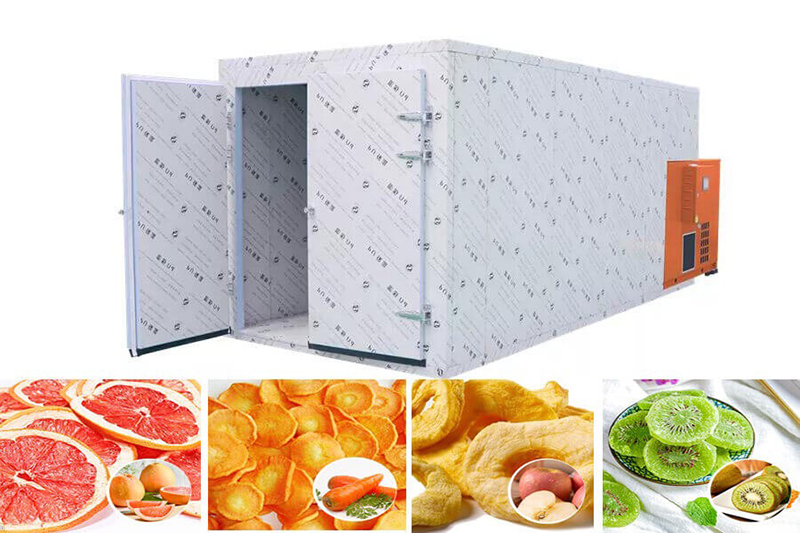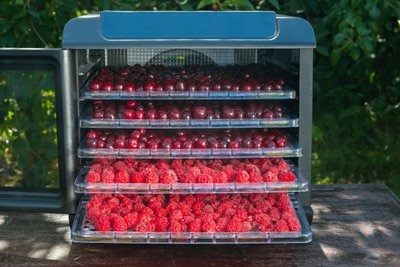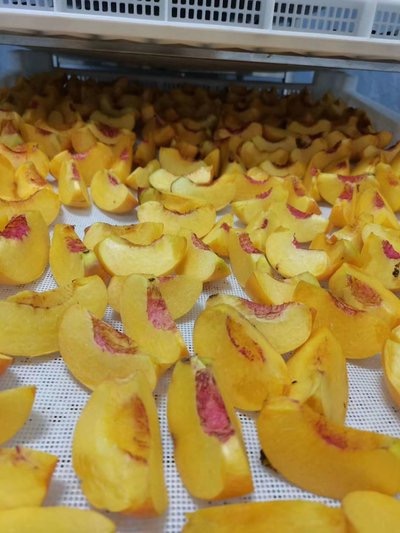
Content Menu
● Understanding Heat Pump Dryers
>> How Heat Pump Dryers Work
● Benefits of Using Heat Pump Dryers for Food Drying
● Operating a Heat Pump Dryer Efficiently
>> 1. Pre-Treat Your Food
>> 2. Load Properly
>> 3. Set the Right Temperature
>> 4. Monitor Humidity Levels
>> 5. Clean Regularly
● Additional Tips for Efficient Operation
>> 6. Use Drying Trays Wisely
>> 7. Experiment with Drying Times
>> 8. Store Dried Foods Properly
● Conclusion
● FAQ
>> 1. What types of food can be dried using a heat pump dryer?
>> 2. How long does it take to dry food in a heat pump dryer?
>> 3. Is it necessary to blanch vegetables before drying?
>> 4. Can I use my heat pump dryer for other purposes besides food?
>> 5. How do I maintain my heat pump dryer?
Heat pump dryers have gained prominence in both residential and commercial settings due to their energy efficiency and versatility in handling various drying tasks. This article will delve into how to operate a heat pump dryer efficiently, particularly in the context of food drying, while also providing insights into the technology behind these appliances.

Understanding Heat Pump Dryers
Heat pump dryers utilize a refrigeration cycle to remove moisture from clothes or food products. Unlike traditional dryers that vent hot air outside, heat pump dryers recycle the air within the machine, making them more energy-efficient.
How Heat Pump Dryers Work
1. Evaporation: The moisture-laden air is drawn into the dryer and passed over a cold evaporator coil, causing the moisture to condense into water.
2. Heating: The remaining dry air is then heated by a compressor and sent back into the drum to continue the drying process.
3. Condensation: The collected moisture is drained away or stored in a tank for easy disposal.
This closed-loop system not only saves energy but also helps maintain optimal drying conditions.
Benefits of Using Heat Pump Dryers for Food Drying
Using heat pump dryers for food drying offers several advantages:
- Energy Efficiency: Heat pump dryers consume significantly less energy than conventional drying methods, making them cost-effective in the long run.
- Gentle Drying: The lower temperatures used in heat pump dryers help preserve the nutritional value and flavor of food products.
- Versatility: These dryers can handle a variety of foods, from fruits and vegetables to meats and herbs.
- Environmentally Friendly: By reducing energy consumption, heat pump dryers contribute to lower carbon emissions.
Operating a Heat Pump Dryer Efficiently
To maximize the efficiency of your heat pump dryer, consider the following tips:
1. Pre-Treat Your Food
Before placing food items in the dryer, ensure they are properly prepared:
- Wash and Cut: Wash fruits and vegetables thoroughly to remove any pesticides or dirt. Cut them into uniform sizes to promote even drying. For example, apple slices should be about 1/4 inch thick for optimal results.
- Blanching: Blanch vegetables briefly before drying to preserve color and nutrients. This process involves boiling vegetables for a short time followed by immediate cooling in ice water. Blanching helps deactivate enzymes that can cause loss of flavor, color, and texture during storage.
2. Load Properly
Avoid overloading the dryer as it can lead to inefficient drying:
- Space for Air Circulation: Leave enough space for air circulation around each item. Overcrowding can trap moisture and prevent even drying.
- Manufacturer Guidelines: Follow manufacturer guidelines regarding load capacity. Each model may have specific recommendations based on its design and power.
3. Set the Right Temperature
Adjusting the temperature settings can significantly impact drying efficiency:
- Lower Temperatures for Delicate Items: Use lower temperatures for delicate items like herbs or berries. This helps maintain their flavor and nutritional content without causing damage.
- Higher Temperatures for Denser Foods: Higher temperatures may be suitable for denser foods like meats or thicker cuts of vegetables that require more heat to remove moisture effectively.

4. Monitor Humidity Levels
Humidity levels play a crucial role in drying efficiency:
- Use a Hygrometer: Employ a hygrometer to monitor humidity in the drying area. Maintaining optimal humidity levels ensures efficient moisture removal from food items.
- Proper Ventilation: Ensure proper ventilation to maintain optimal humidity levels within your drying space. This can involve using fans or opening windows when necessary.
5. Clean Regularly
Regular maintenance is essential for efficient operation:
- Clean Filters and Tanks: Clean filters and condensate tanks regularly to prevent blockages that can hinder airflow and moisture removal.
- Inspect Evaporator Coils: Inspect and clean evaporator coils to ensure optimal airflow. Dust buildup on coils can reduce efficiency significantly.
Additional Tips for Efficient Operation
In addition to the above strategies, here are some more tips to enhance your heat pump dryer's performance:
6. Use Drying Trays Wisely
Utilize appropriate trays or racks when loading your dryer:
- Mesh Trays: Consider using mesh trays that allow air to circulate freely around food items. This promotes even drying and prevents moisture from being trapped underneath.
- Avoid Metal Trays: Avoid using metal trays as they can conduct heat unevenly, leading to inconsistent drying results.
7. Experiment with Drying Times
Finding the right balance between time and temperature is crucial:
- Trial Runs: Conduct trial runs with different types of foods to find optimal drying times without compromising quality.
- Check Progress Regularly: Periodically check on your food during the drying process to ensure it is not over-drying or under-drying.
8. Store Dried Foods Properly
Once your food is dried, proper storage is essential:
- Use Airtight Containers: Store dried foods in airtight containers to prevent moisture absorption and maintain freshness.
- Cool Before Sealing: Allow dried foods to cool completely before sealing them in containers; this prevents condensation from forming inside the container.
Conclusion
Operating a heat pump dryer efficiently requires attention to detail in preparation, loading, temperature settings, humidity control, and regular maintenance. By following these guidelines, users can maximize their energy savings while achieving high-quality dried food products. Heat pump dryers offer an environmentally friendly solution that preserves the integrity of food while minimizing energy consumption.

FAQ
1. What types of food can be dried using a heat pump dryer?
Heat pump dryers can effectively dry various foods including fruits (like apples and bananas), vegetables (such as carrots and peppers), meats (like jerky), and herbs (like basil and oregano).
2. How long does it take to dry food in a heat pump dryer?
The drying time varies based on the type of food and its moisture content. Generally, it can take anywhere from several hours to over a day for certain items depending on their thickness and water content.
3. Is it necessary to blanch vegetables before drying?
Blanching is recommended for many vegetables as it helps preserve color, texture, and nutrients during the drying process by deactivating enzymes that could lead to spoilage.
4. Can I use my heat pump dryer for other purposes besides food?
While primarily designed for food drying, heat pump dryers can also be used for textiles; however, ensure that you follow specific guidelines provided by the manufacturer regarding load types and capacities.
5. How do I maintain my heat pump dryer?
Regular maintenance includes cleaning filters monthly, checking hoses for clogs every few months, inspecting evaporator coils biannually, and ensuring that all components are functioning properly according to manufacturer specifications.












